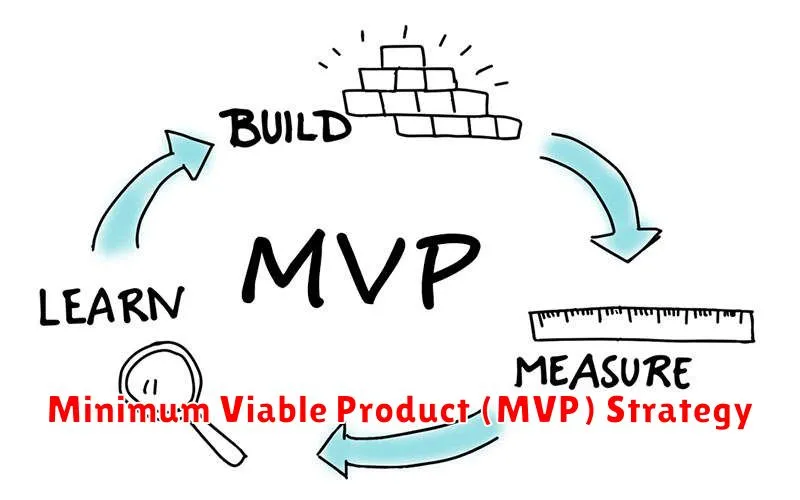Validating a business idea is crucial for success. This comprehensive guide on how to research and validate your business idea will equip you with the essential tools and strategies to thoroughly investigate market demand, analyze your competition, and ultimately determine the viability of your venture. Learn how to conduct effective market research, identify your target audience, and develop a robust business plan that minimizes risk and maximizes your chances of success. Don’t launch your business unprepared; master the art of business idea validation.
Why Idea Validation is Critical

Idea validation is critical because it significantly reduces the risk of launching a product or service that nobody wants. Without validation, you risk investing substantial time, money, and effort into building something that ultimately fails to find a market.
Validating your idea allows you to test your assumptions about your target market, your product’s value proposition, and the viability of your business model. It helps you identify potential problems early on, saving you from costly mistakes later in the development process.
By gathering real-world data and feedback through techniques like surveys, interviews, and prototypes, you can make informed decisions about your business, increasing your chances of success and minimizing wasted resources. Essentially, validation transforms a hopeful guess into a data-driven decision.
Ultimately, successful entrepreneurs don’t just have good ideas; they have validated good ideas. This process is essential for building a sustainable and profitable business.
Market Research Techniques for Entrepreneurs
Effective market research is crucial for entrepreneurial success. Understanding your target audience and the competitive landscape is paramount before launching a business. Several techniques can help entrepreneurs gather valuable insights.
Surveys are a cost-effective way to collect quantitative data from a large sample size. Interviews, on the other hand, provide rich qualitative data by allowing for in-depth conversations with potential customers. These can be conducted in person, over the phone, or online.
Focus groups facilitate discussions among a small group of target customers, revealing valuable insights into their needs, preferences, and opinions. Observational research involves watching customers interact with your product or service or similar offerings, providing valuable behavioral data.
Competitive analysis involves studying competitors’ strengths, weaknesses, pricing, and marketing strategies. This provides a benchmark for your own business and identifies opportunities for differentiation. Secondary research leverages existing data sources like industry reports, market analysis, and government statistics to gain a broader understanding of the market.
Utilizing a combination of these market research techniques allows entrepreneurs to build a comprehensive understanding of their market, validate their business idea, and minimize risk.
How to Analyze the Competition
Analyzing your competition is crucial for validating your business idea. Begin by identifying your direct competitors – businesses offering similar products or services to your target market. Then, broaden your search to include indirect competitors – those offering alternative solutions to the same customer needs.
Next, conduct a thorough competitive analysis. This involves researching your competitors’ strengths and weaknesses. Examine their pricing strategies, marketing efforts, customer service, product offerings, and overall brand image. Consider using tools like SWOT analysis to organize your findings.
Pay close attention to your competitors’ market share and customer reviews. This will provide valuable insights into their effectiveness and areas for improvement. Understanding their value proposition – what makes them unique and appealing to customers – is vital for differentiating your own business.
Finally, use this information to identify your competitive advantage. What makes your business unique and better positioned to succeed? This could be superior product quality, lower prices, better customer service, or a more innovative approach. Clearly defining your competitive advantage is essential for your marketing and overall business strategy.
Using Surveys and Feedback for Idea Testing
Surveys and feedback mechanisms are invaluable tools for testing the viability of your business idea. They provide direct insights into customer needs and preferences, allowing you to assess the market demand for your product or service.
Surveys can be easily created and distributed online, enabling you to gather a wide range of responses quickly. Focus on clear, concise questions that directly address key aspects of your idea, such as pricing, features, and overall appeal. Consider using a mix of question types, including multiple-choice, rating scales, and open-ended questions to gather both quantitative and qualitative data.
Feedback, whether gathered through surveys or other channels (e.g., focus groups, interviews), should be analyzed systematically. Look for recurring themes and patterns to identify areas of strength and weakness in your business concept. This iterative process of data collection and analysis allows you to refine your idea based on real-world input.
Remember to target your surveys and feedback requests to your ideal customer profile to ensure the data collected is relevant and representative. The insights gained will help you validate your assumptions, identify potential challenges, and ultimately increase the chances of your business idea’s success.
Minimum Viable Product (MVP) Strategy

A Minimum Viable Product (MVP) strategy is crucial for validating your business idea before significant investment. It involves building a simplified version of your product with only the core features needed to attract early adopters and gather feedback.
The goal is to test your assumptions quickly and efficiently. Instead of launching a fully-featured product, an MVP allows you to identify key market needs and iterate based on real-world user data. This iterative approach minimizes risk and maximizes the chances of success.
Consider using different MVP types depending on your needs. This could range from a simple landing page to a functional prototype or a limited beta release. The key is to choose the approach that allows you to gather the most valuable feedback with the least amount of effort and resources.
Following the MVP launch, continuous feedback analysis is critical. Analyze user behavior, feature usage, and gathered feedback to inform your next iteration. This iterative process of building, testing, and refining your product based on data is the essence of a successful MVP strategy.
Remember, an MVP is not about creating a “cheap” product; it’s about smart resource allocation focused on validating your core value proposition before scaling.
Understanding Product-Market Fit
Product-market fit is the degree to which a product satisfies market demand. It’s not simply about having a good product; it’s about having a product that resonates with a specific target audience and solves a real problem for them.
Achieving product-market fit is crucial for business success. Without it, even the best product will struggle to gain traction. Validation is key; you must ensure your assumptions about your target market and their needs are accurate.
Several indicators suggest a strong product-market fit. These include high customer acquisition rates, strong customer retention, positive customer feedback, and a high level of word-of-mouth referrals. Conversely, low sales, high churn rates, and negative feedback are all signs that your product may not be a good fit for the market.
Understanding and achieving product-market fit requires a thorough understanding of your target audience, their needs, and their preferences. It necessitates rigorous testing and iteration, continuously refining your product based on customer feedback and market analysis. This iterative process ensures your product aligns with the demands of the market.
Tools to Validate Business Ideas Online
Validating your business idea online requires leveraging various tools to gather crucial data and insights. Several platforms offer invaluable assistance in this process.
Google Trends provides data on search volume for keywords related to your product or service, indicating potential market interest. Analyzing this data can help determine the viability and demand for your offering.
Social media analytics tools, such as those provided by platforms like Facebook, Instagram, and Twitter, allow you to assess audience engagement with similar products or services. This reveals potential customer demographics and preferences.
Survey platforms like SurveyMonkey or Typeform enable you to directly collect feedback from potential customers regarding your business idea. These tools allow for targeted questionnaires and data analysis to identify potential pain points and market needs.
Online forums and communities, such as Reddit or niche-specific forums, offer opportunities to engage with potential customers and gain insights into their needs and challenges. Analyzing discussions can reveal unmet demands and potential opportunities.
Competitor analysis tools help you understand your competitive landscape. Tools like SEMrush or Ahrefs provide insights into competitor strategies, website traffic, and marketing effectiveness, informing your own business approach.
Utilizing a combination of these online validation tools helps you gather comprehensive data, refine your business idea, and increase your chances of success.
Pivoting or Proceeding Based on Results
After conducting thorough market research and validating your business idea, it’s crucial to analyze the results objectively. Data-driven decisions are paramount at this stage. Did your research support your initial assumptions? Did you identify unmet needs or significant market gaps? Did your prototype or Minimum Viable Product (MVP) receive positive feedback and demonstrate market traction?
If the results strongly support your initial concept and demonstrate significant market potential, you can proceed with confidence, focusing on scaling your operations and refining your strategy based on initial feedback. This involves refining your business plan, securing funding, and building your team.
However, if the results indicate significant flaws in your initial assumptions, or reveal a lack of market interest, pivoting may be necessary. This doesn’t necessarily mean abandoning the idea completely; instead, it involves adapting your business model, target market, or even your product or service to better align with the discovered market needs and preferences. This requires flexibility, adaptability, and the willingness to learn from initial setbacks. A successful pivot often involves incorporating the insights gained from the research phase to refine the value proposition and increase chances of success. Thorough analysis and a willingness to iterate are vital components of this process.
Ultimately, the decision to pivot or proceed is contingent upon a realistic and unbiased assessment of the research findings. Honest self-reflection is crucial; avoiding emotional attachment to the initial idea will ensure that you make the most effective decision for long-term success.

